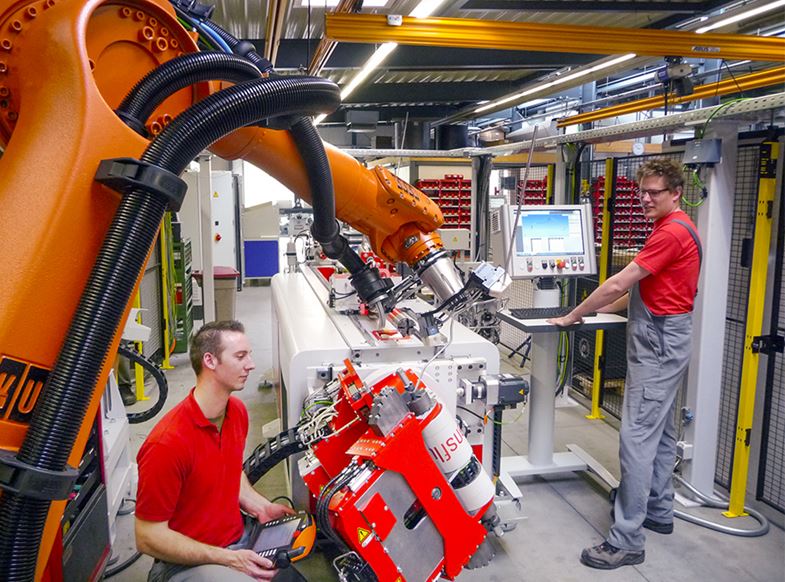Flexible Production With Bending Robots And Encoding Automation
The Automation trend towards flexibility in machining processes with a high degree of automation is enduring in many sectors. Contributed by transfluid
An efficient bending system for short and long pipes has been developed by trans fluid, and the automation system bends 6 m long pipes with small diameters at a consistently high speed. The production unit is capable of producing shorter pipelines of 500 mm featuring diverse bending geometry in large quantities. Handling coated pipes during processing can be demanding because of sensitive surfaces thus, special care and treatment are required during processing.
Chain Conveyor And Clever Encoding
To ensure that production Automation can be implemented safely, quickly and thoroughly, a machine shop equipped has equipped itself with two robots that are used as bending machines with different magazines. One magazine is a “chain conveyor”. It guides long pipes to the bending robot.
According to the markings placed on the pipes by the encoding beforehand, the robots are able to detect which geometries need to be produced. In this case, they are capable of bending a long pipe from one side to the centre.
Following processing, the workpiece is placed on a slide. The bending cell also possesses a separate step conveyor. This feeds in short pipe lengths, including two different pipes if this is required. Depending on the case at hand, each robot processes a different geometry or pipes with another diameter. This enables a large series of short components to be processed efficiently at the same time. Long components can be processed just as effectively.

Achieving Versatility
“An additional challenge for the development of our solution was that all the pipes have previously end formed ends on both sides or they already have cutting rings mounted,” said Stefanie Flaeper, general manager at trans fluid.
“With robot technology, bending geometry may be started at an extremely short distance from the bend on both previously mounted ends. And the process—for example preparing the ends first and then bending—is able to be implemented consistently for any pipe with this bending technique,” explained Ms Flaeper.
This allows prior processing of the ends to be significantly cheaper and faster, and with this process, there are no geometric limitations and the pipe can be sealed beforehand with caps. This makes it immediately available for use after bending.
Bending Directly From CAD Automation System
In addition to flexibility, an additional strength of the automation system offers another advantage that cannot be underestimated: The robots do not need to be programmed. As with any conventional bending machine, the necessary data may be loaded into the bending robots with a data file directly from the CAD system and transformed into a bending geometry. This makes the psychological barrier raised by programming a thing of the past, and the systems can be linked online with all relevant measurement systems.
CHECK OUT THESE OTHER ARTICLES
● Nissan Teaches Robots To Make Replacement Parts For Cars
● Universal Robots Future-Proofs Production Processes In Southeast Asia With Collaborative Robots
● Universal Robots Launches Heavy-Duty Payload Cobot For Collaborative Automation
● Walter’s HU5 Geometry Enhances Capabilities Of Cutting Machines
● Hypertherm Implements Strategies to Enhance Preventive Maintenance Program In Asia
● ANCA Motion’s Multi-Axis Servo System Conserves 96 Percent Of Energy Wastage
● Bystronic To Complete Modernisation Of Production Facility
● Tungaloy Expands HP Geometry Line of T-CBN Inserts
● OnRobot Wins Gold in LEAP Awards
● Industrial Robots: Robot Investment Reaches Record US$16.5 Billion
WANT MORE INSIDER NEWS? SUBSCRIBE TO OUR DIGITAL MAGAZINE NOW!
FOLLOW US ON: LinkedIn, Facebook, Twitter














